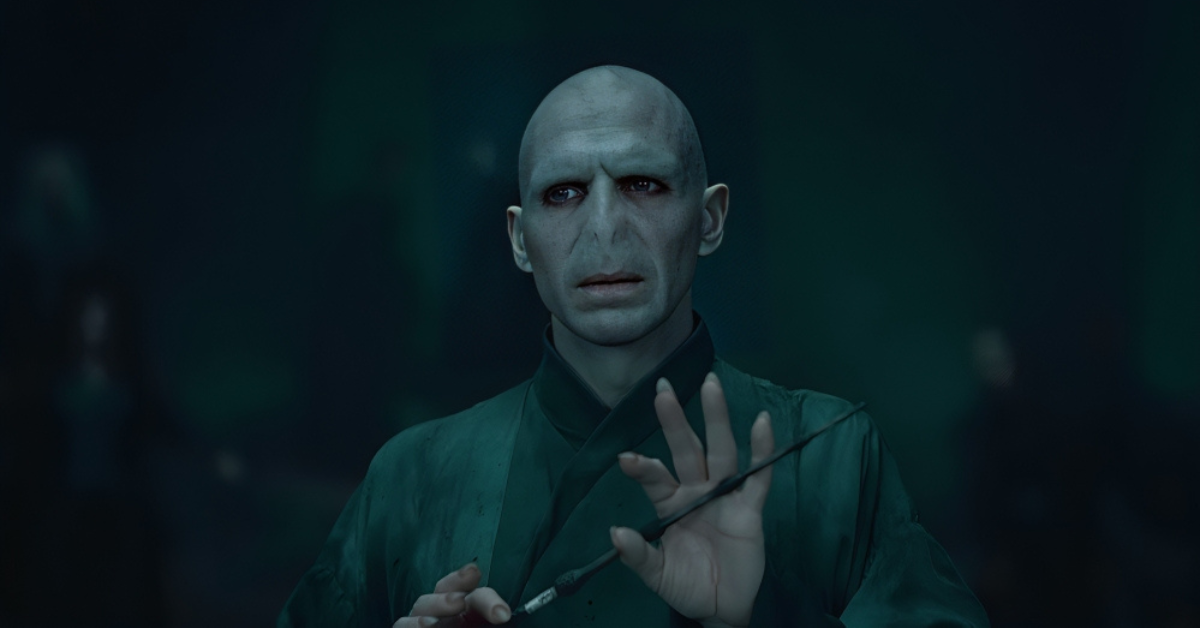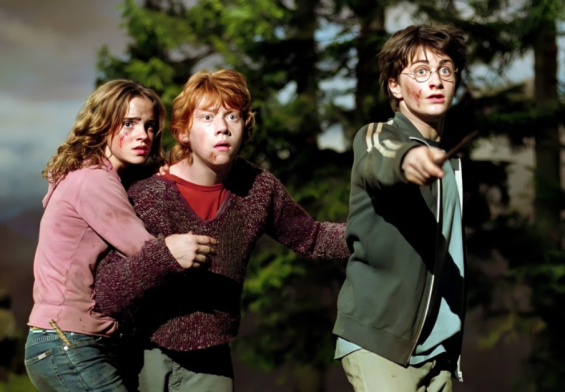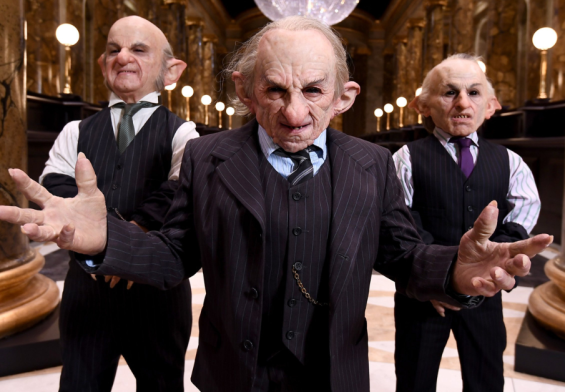
Hey everyone, welcome to another installment of Harry Potter Theory. Today we’re going to be discussing the Elder Wand, the most powerful wand in the Harry Potter universe.
Specifically, we’ll be tackling the question of whether or not the Elder Wand could ever be replicated.
That is, if a wand maker was given the right materials, could they make another Elder Wand? Let’s dive in.
Recommended for You:- The Weasley Family: 10 Shocking Facts
- Why Didn’t Fred and George Notice PETTIGREW on the Marauder’s Map?
- Did Harry’s Horcrux Make the Dursleys Bad People?
- The Truth Behind How Dementors Are Created
History of the Elder Wand
Like I mentioned earlier, the fabled Elder Wand is undeniably the most powerful wand in the Harry Potter universe. The wand was the first of the three Deathly Hallows, purportedly made by Death himself, and according to legend, no wand is its equal.
With the Elder Wand, witches and wizards were able to effortlessly produce intensely powerful magic that others could only dream of, and possession of the wand also meant that you could produce magic, which was not otherwise possible – including things like mending other wands, something that could not normally be achieved through magic.
Origins of the Wand
Origins of the wand can be traced back to the tale of the three brothers: Antioch, Cadmus, and Ignotius Peverell. The plot surrounds the three wizard brothers and their ability to cheat death for a short period of time. After conquering death, a personification of death, under the guise of congratulating them, gave each brother a gift of their choosing – including the highlight of today’s theory, the Elder Wand.
The eldest brother, a combative man, asked for a wand more powerful than any in existence. Death granted his wish by fashioning the Elder Wand from a branch of a nearby Elder Tree, standing on the banks of the river.
The three brothers took their prizes, and soon went on their separate ways, but the brothers’ meeting with death was how the Deathly Hallows were born – however, this was not the last time that death and the three brothers would meet.
The Bloody Trail of the Elder Wand
Each brother, under their own unique circumstances, ended up meeting death once more. The eldest brother traveled to a village where a wizard whom he had quarreled with lived.
He sought out a duel and fought the wizard using the wand, instantly killing the latter. Leaving his enemy dead upon the floor, the eldest brother walked to an inn not far from the dueling site and spent the night there. Taken by his conscience and lust for the Elder Wand’s power, the eldest brother boasted of this wand gifted by death and his own invincibility.
That very night, death transfigured into a murderous wizard. The unknown murderous wizard crept into the inn as the eldest brother slept, drunk from wine. The wizard slit the eldest brother’s throat for good measure and stole the wand, and thus the bloody path of the Elder Wand began.
After Antioch died, the wand was passed around from wizard to wizard, usually by violent means, which led to the wand acquiring quite a few different names – the Death Stick and the Wand of Destiny – an omen of death that alludes to a bloody trail mentioned by Xenophilius Lovegood.
The bloody trail of the Elder Wand is splattered across the pages of wizarding history, and this bloody trail continued for many centuries – that is, until Harry Potter came to possess it.
The Fate of the Elder Wand: Book vs. Film
And what happened next varies from book to film. In the book, after repairing his own wand, Harry lays the Elder Wand to rest with Dumbledore. In the film, however, a very different course of action is taken – a much more drastic one, as Harry ends up snapping the wand in half.
It’s mine. What should we do with it?
We?
I’m just saying – that’s the Elder Wand, the most powerful wand in the world. With that, we’d be invincible.
Harry pauses and has second thoughts, then snaps the wand in half, destroying its power, before tossing the two halves into the abyss. Ron and Hermione proudly smile at Harry. And with Harry snapping the wand in half, I do ask myself – is it possible to create another Elder Wand?
Creating a New Elder Wand
At the end of the day, the Elder Wand was just a wand, and theoretically, a proficient enough wand maker should be able to recreate it, provided they have the correct materials. Right?
What Is the Elder Wand Made Of?
Fortunately for us, wand making is exceptionally well documented in the wizarding world. We know about wand makers, wand materials, wand lengths, and wand flexibility. So to kick things off, let’s see what the Elder Wand is actually made of.
The Elder Wand was a 15-inch long wand made of elderwood that contained a Thestral tail hair core within. It was also said to have been quite rigid, and adorned with carvings down its length that resembled clusters of elderberries.
Elderwood
Elderwood, which is the rarest wood of all, comes from the genus Sambucus, a genus of between 5 and 30 species of shrubs or small trees in the Monchatel family. Ollivander has quite a bit to say on the subject:
“The rarest wand wood of all, and reputed to be deeply unlucky, the Elder Wand is trickier to master than any other. It contains powerful magic, but scorns to remain with any owner who is not the superior of his or her company.
It takes a remarkable wizard to keep the Elder Wand for any length of time. The old superstition – ‘wand of elder, never prosper’ – has its basis in the sphere of the wand. But in fact, the superstition is baseless, and those foolish wand makers who refuse to work with elder do so more because they doubt they will be able to sell their products than from fear of working with this wood.”
Thestral Tail Hair Core
Next, we’ve got the Thestral tail hair core. Thestral hair comes from the fabled magical beast, the Thestral. If you aren’t already aware, Thestrals are a breed of winged horse with a skeletal body, face with reptilian features, and wide, bat-like wings.
The argument could be made that the Thestral hair core is the most powerful of all wand cores, as the Elder Wand itself is the only wand in existence known to use it. However, it is also possibly the most unstable and most difficult to use of all of the cores.
It’s also a tricky core to master, as only a witch or wizard who is capable of accepting death could do so.
Length and Flexibility of the Elder Wand
As for the length, the Elder Wand measured in at 15 inches, which puts it right at the tip-top of the 9-15 inch range for wand lengths. Ollivander once stated that longer-than-average wands tend to be drawn to those with a physical peculiarity or a bigger personality.
The Elder Wand was apparently quite rigid, which makes sense in relation to Ollivander’s notes on the subject. Wand flexibility or rigidity denotes the degree of adaptability and willingness to change possessed by the wand and owner pair.
As you can see, creating a specific wand really just comes down to 4 variables: wood, core, length, and flexibility. Therefore, assuming all of these factors in building a wand are consistent, it should be entirely plausible for the right wand maker to reproduce an Elder Wand.
The Crucial Factor: Witnessing Death
What’s also important to note here is that in order to create such a wand, the wand maker themselves must have witnessed death. I say this because one must be able to see Thestrals in order to utilize their hair, and since one must witness death firsthand to see a Thestral, anyone wishing to forge a wand with the hair must witness death.
So, it all checks out – we can make an Elder Wand. However, it wouldn’t be the Elder Wand, at least not the one of legend. And legend is an important thing to focus on here because the Elder Wand is just that – a thing of legend.
The Legend of the Elder Wand
Many consider the wand’s origin story to be just that – a story – a fictionalized tale that came from Beedle the Bard. No one really knows the truth behind Beedle’s tales, and there are two big looming questions here: were the stories fabricated entirely, or did Beedle draw inspiration from something that he had genuinely witnessed?
Unfortunately, there’s little evidence out there to support either argument. However, given that the Hallows actually exist, I’m willing to bet that it was the latter. We know the three Hallows genuinely exist, and that can be confirmed, but was the personification of Death just Beedle adding his own spin to the story?
Death or a Powerful Dark Wizard?
How can we be sure that Death wasn’t just a powerful dark wizard? Could it be possible that the three brothers were talented wizards that just created the Hallows themselves? As it stands, there is no proof that suggests that Death personified is indeed real. His existence is only mentioned in one work, and it’s a fictional one.
To say that Death exists because of this one book for children is a stretch, particularly as the existence of the Hallows is the only real argument one could make for his existence, and there could be many ways that the Hallows themselves were created.
Dumbledore, for one, doesn’t seem to have much faith in the validity of Death’s existence.
“So it’s true,” asked Harry. “All of it, for the Peverell brothers?”
“Were the three brothers of the tale?” said Dumbledore, nodding.
“Oh yes, I think so. Whether they met death on a lonely road, I think it more likely that the Peverell brothers were simply gifted, dangerous wizards who succeeded in creating those powerful objects. The story of them being death’s own hallows seems to me the sort of legend that might have sprung up around such creations.”
Conclusion: Can the Elder Wand Be Recreated?
And I’m with Dumbledore on that one. In truth, there are many powerful artifacts in the Harry Potter universe, and the Hallows, though powerful, don’t seem entirely outside the realm of possibility. And if the Peverell brothers were indeed just wizards responsible for the wand’s creation, then this of course would mean, drumroll please, that it can be recreated.
But if Death created it, well, that’s a different question. What do you think? Can a wand maker recreate the Elder Wand with the right materials, or was the Elder Wand a one-off magical artifact forged by Death himself?
Let me know in the comment section below.



